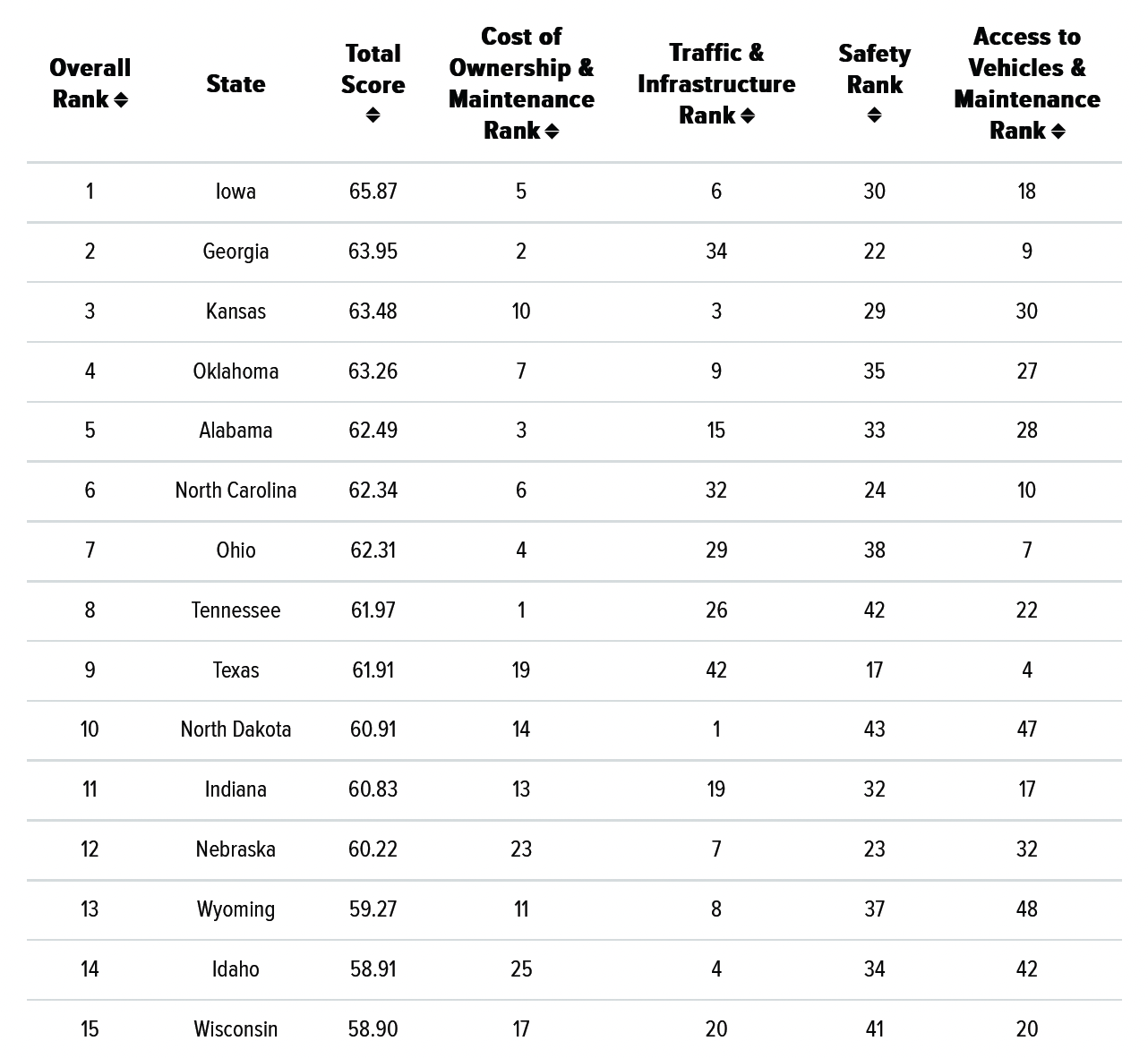This story first appeared on WalletHub.
Everyone hates being stuck in traffic. It makes you late, and causes many people’s tempers to flare up. It’s also quite bad for your wallet – in fact, congestion cost the average driver $869 in 2022, thanks to an average of 51 hours spent sitting in traffic. The U.S. also has eight out of the world’s 25 worst cities for traffic, and 19 of the worst 25 in North America.
Congestion isn’t the only concern on the road, though. People want to know that they will be driving on safe, well-maintained roads before heading out, and while the U.S. has a fairly good track record, it certainly doesn’t top the list. For example, the World Economic Forum ranks the U.S. 17 out of 141 countries when it comes to road quality. Road conditions naturally aren’t consistent across the entire country. To identify the states with the best driving conditions, WalletHub compared all 50 states across 31 key indicators of a positive commute. Our data set ranges from average gas prices to rush-hour traffic congestion to road quality.
Best Driving States

As part of the study, WalletHub consulted CCEE Adjunct Assistant Professor Daniel Findley, who also serves as associate director at NC State’s Institute for Transportation Research and Education (ITRE). Read the Q&A below.
What tips do you have for a person looking to keep the costs of car ownership low?
The purchase price plays a large role in the cost of owning a vehicle, but the longer you own a vehicle, the more that cost is spread over time which effectively lowers the annual cost. Most of the vehicles we have owned in our family have been slightly used to help with the initial purchase price. Likewise, the fuel economy and/or the type of fuel (gasoline, diesel, electric, hybrid, etc.) has huge impacts throughout the life of the vehicle on the cost to operate it. In terms of the life cycle of owning a vehicle, preventative maintenance is your best friend. Preventative maintenance (keeping your tires properly inflated, servicing them at regular intervals, etc.) can help keep your vehicle running efficiently by uncovering small issues before they cause damage to the components of your vehicle.
Some of the best ways to keep your car ownership costs low are your driving and general travel behaviors, such as:
- Plan an efficient route that minimizes extra miles – whether for long road trips or by effectively organizing multiple errands.
- Excessive speeding worsens your fuel economy, so make sure to obey all speed limits.
- Consider the time of day and the day of the week you need to drive through congested areas (if you are sitting still in traffic, you are getting 0 miles per gallon).
- Can any vehicle trips be replaced with walking, biking, public transit, or carpooling? If you can trade driving with another travel mode, that is a great way to reduce the miles you drive thereby reducing your vehicle costs.
Should states offer tax or other incentives to encourage people to purchase electric vehicles? What else can states do to support the adoption of low-emissions vehicles (e.g. charging station infrastructure for electric vehicles)?
States use a variety of incentives to encourage people to act in a way that aligns with the state’s policy goals and objectives. Transportation has a huge impact on people’s lives and our natural environment, so I believe states should consider incentives related to transportation and vehicle usage that align with their goals. Information is very important for consumers, so even just knowing where charging stations are located could be enough to impact the adoption of electric vehicles. For instance, in North Carolina, drivenc.gov provides a map of charging stations around the state.
In your opinion when will self-driving cars be readily available? What are the regulatory or policy hurdles?
I think we still have a while before fully self-driving cars have widespread availability. However, I think market saturation will happen quickly when the technology is ready and a variety of business models will allow consumers to access the technology in a way that fits their needs and budgets. I expect this technology will open up new industries and substantially support existing ones – perhaps not as radically as changing from the horse and buggy to the personal automobile over a hundred years ago, but still in a transformative way.
How can states reduce the number of traffic fatalities?
States have a multitude of programs and funding focused on improving safety and reducing fatalities. Many have adopted systemic approaches to safety to identify risky locations and implement effective countermeasures. As individual drivers, we can also contribute to traffic safety and build a culture of safety around driving. This includes only driving when you can give the task your full attention (no distractions, no impairment, and no drowsy driving) as well as obeying traffic laws and speed limits.
What are your predictions for the automotive industry? Will home-based work and online shopping lead to a decline in car ownership?
Car ownership has continued to increase in the past few years, so I do not expect any substantial changes in that trend in the near term. However, I think the availability of more transportation options (biking, walking, and public transit) along with growing urban populations will affect car ownership and the miles that people drive.
